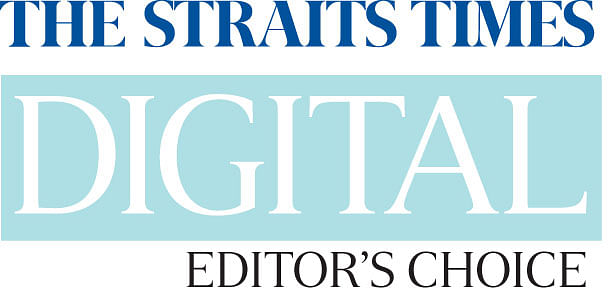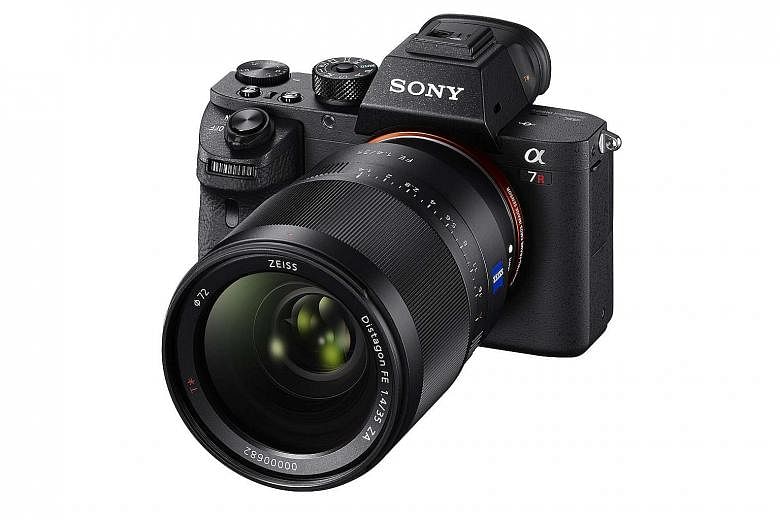Comparing the cameras in Sony's a7 full-frame interchangeable lens mirrorless camera series can be confusing. For one thing, the models have similar names like a7 II, a7S and a7R. Each of the models also has its own strengths.
The latest Sony a7R II still sounds a mouthful. But it could clear up the confusion by being the only mirrorless camera you will need. This is because it tops its siblings in most of the key performance areas.
It has a 42.4-megapixel image sensor (bettering the a7R's 37.4-megapixel sensor). It has an autofocusing (AF) system with 399 focal-plane phase-detection AF points with 25 contrast-detection AF points (bettering the a7 II, which has 117-point phase-detection AF points).
It matches the others with a five-axis image stabiliser and 4K (3,840 x 2,160 pixels) video-capture ability.
Looks wise, ait bears a close resemblance to the a7 II.a It has a pronounced rubberised grip and a contoured rear thumb rest that allows for a more secure hold on the camera.
It feels solid and sturdy, thanks to a magnesium alloy shell. It is probably the most comfortable mirrorless camera I have held in my hands.
-
TECH SPECS
-
PRICE: $4,099 (body only)
IMAGE SENSOR: 42.4-megapixel full-frame CMOS
DISPLAY: 3-inch tiltable LCD with 1,228,800 dots; electronic viewfinder with 2,359,296 dots
SENSITIVITY: ISO 50 to 102,400
SHOOTING SPEED: Up to 5 frames per second
CONNECTIVITY: Wi-Fi, Near Field Communications
WEIGHT: 625g (body only with battery and memory card)
-
RATING
FEATURES: 4/5
DESIGN: 5/5
PERFORMANCE: 5/5
BATTERY LIFE: 3/5
VALUE FOR MONEY: 4/5
OVERALL: 4/5
Button layout is well thought out. On the camera's top right, there are now two customisable function buttons to accompany the Mode dial and the exposure compensation dial. The shutter release sits atop the grip instead of on the right of the body. There is a command dial in front of the grip, where the index finger usually rests. A rubberised rear command dial sits near the thumb rest.
All of the important controls are within easy reach, which makes it a breeze to change settings quickly.
It starts up in 1.5sec and shuts down in 1.3sec. Normal mirrorless cameras take about 2sec each for start-up and shut-down.
Shutter lag is negligible and the camera achieves focus lock almost instantaneously in bright sunlight. In dim conditions, it usually takes around 1sec to secure a focus with the aid of AF assist light.
With its faster AF speed, I was able to capture moving subjects in sharp focus better than with its predecessors.

In video mode, it takes at most 2sec to refocus when you pan from one scene to another.
Using a microSDXC card with a maximum writing speed of 95MB per second, this camera is able to capture 45 RAW images in 9.7sec before the buffer runs out. This is pretty impressive.
Image quality is wonderful with a sharp rendition of pixels and vibrant colours. I was blown away by the amount of details I got from this camera. Dynamic range is superb, even with JPEG images.
Noise performance is also stellar. I did not notice any image noise until ISO 3,200, with loss of details becoming evident only at ISO 6,400. Even at ISO 12,800, images are still acceptable for posting on Instagram or Facebook. But anything above ISO 12,800 looks washed out with distinct detail loss.
The videos shot with this camera, whether in full high-definition or 4K, are wonderfully crisp and vibrant. But the camera picked up quite a bit of ambient and wind noises.
The only thing that continues to bug the Sony a7 series is the mediocre battery life, and this camera is no different. It averages around 300 still images on a full charge.
In comparison, DSLRs can go up to 1,000 still images on a full charge. Considering that the a7R II is much more expensive than many mid-range full-frame DSLRs, it is a frustrating shortcoming.
- Verdict: Except for its average battery life and hefty price tag, the Sony a7R II is quite simply the best full-frame mirrorless camera right now.


